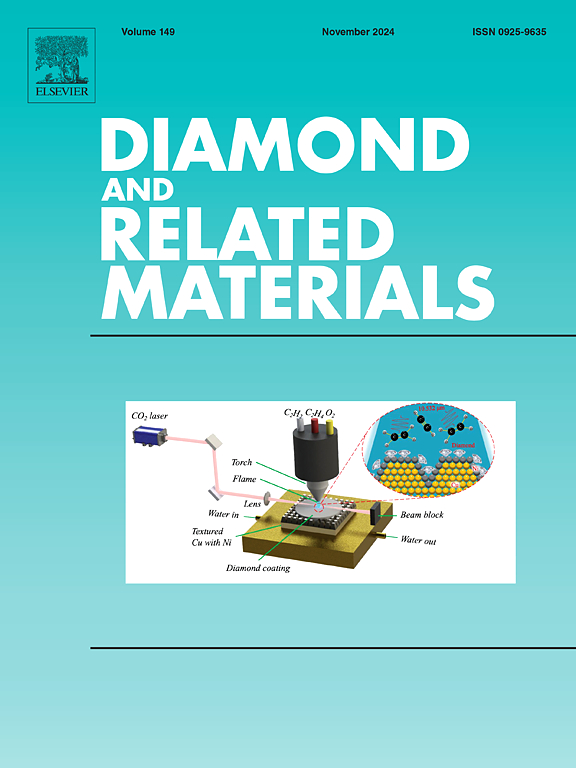Green synthesis of g-C3N4/CeO2 nanocomposites for enhanced photocatalytic degradation of organic dye under simulated sunlight
IF 4.3
3区 材料科学
Q2 MATERIALS SCIENCE, COATINGS & FILMS
引用次数: 0
Abstract
This study investigates the synthesis and photocatalytic efficiency of g-C3N4/CeO2 nanocomposites for Methylene Blue (MB) degradation under simulated sunlight. Using Cleistocalyx operculatus leaf extract as a green reducing agent, the nanocomposites were successfully synthesized. The g-C3N4/CeO2 (1:4) composite demonstrated a high surface area (130.54 m2/g) and a band gap of 2.49 eV, enhancing light absorption. Photocatalytic tests revealed that it achieved 95.70 % MB degradation, surpassing pure g-C3N4 (68.90 %) and CeO2 (72.12 %). The degradation followed pseudo-first-order kinetics, with a rate constant 6.08 times higher than CeO2 and 4.57 times higher than g-C3N4. This remarkable efficiency is attributed to the composite's large surface area, improved charge separation, and synergistic interaction between g-C3N4 and CeO2. These findings highlight the potential of g-C3N4/CeO2 nanocomposites as efficient, sustainable photocatalysts for organic dye degradation in wastewater treatment.

模拟阳光下g-C3N4/CeO2纳米复合材料增强光催化降解有机染料的绿色合成
研究了g-C3N4/CeO2纳米复合材料的合成及其在模拟阳光下降解亚甲基蓝(MB)的光催化效率。以闭锁花叶提取物为还原剂,成功合成了该纳米复合材料。g- c3n4 /CeO2(1:4)复合材料具有高的比表面积(130.54 m2/g)和2.49 eV的带隙,增强了光吸收。光催化测试结果表明,其对MB的降解率达到95.70%,超过了纯g-C3N4(68.90%)和CeO2(72.12%)。其降解速率常数分别是CeO2的6.08倍和g-C3N4的4.57倍,符合准一级动力学。这种显著的效率归因于复合材料的大表面积,改进的电荷分离,以及g-C3N4和CeO2之间的协同相互作用。这些发现突出了g-C3N4/CeO2纳米复合材料作为废水处理中有机染料降解的高效、可持续光催化剂的潜力。
本文章由计算机程序翻译,如有差异,请以英文原文为准。
求助全文
约1分钟内获得全文
求助全文
来源期刊

Diamond and Related Materials
工程技术-材料科学:综合
CiteScore
6.00
自引率
14.60%
发文量
702
审稿时长
2.1 months
期刊介绍:
DRM is a leading international journal that publishes new fundamental and applied research on all forms of diamond, the integration of diamond with other advanced materials and development of technologies exploiting diamond. The synthesis, characterization and processing of single crystal diamond, polycrystalline films, nanodiamond powders and heterostructures with other advanced materials are encouraged topics for technical and review articles. In addition to diamond, the journal publishes manuscripts on the synthesis, characterization and application of other related materials including diamond-like carbons, carbon nanotubes, graphene, and boron and carbon nitrides. Articles are sought on the chemical functionalization of diamond and related materials as well as their use in electrochemistry, energy storage and conversion, chemical and biological sensing, imaging, thermal management, photonic and quantum applications, electron emission and electronic devices.
The International Conference on Diamond and Carbon Materials has evolved into the largest and most well attended forum in the field of diamond, providing a forum to showcase the latest results in the science and technology of diamond and other carbon materials such as carbon nanotubes, graphene, and diamond-like carbon. Run annually in association with Diamond and Related Materials the conference provides junior and established researchers the opportunity to exchange the latest results ranging from fundamental physical and chemical concepts to applied research focusing on the next generation carbon-based devices.
 求助内容:
求助内容: 应助结果提醒方式:
应助结果提醒方式:


